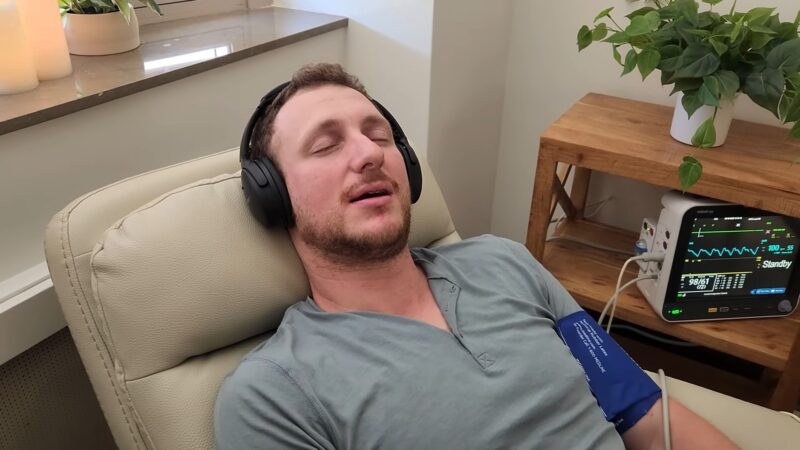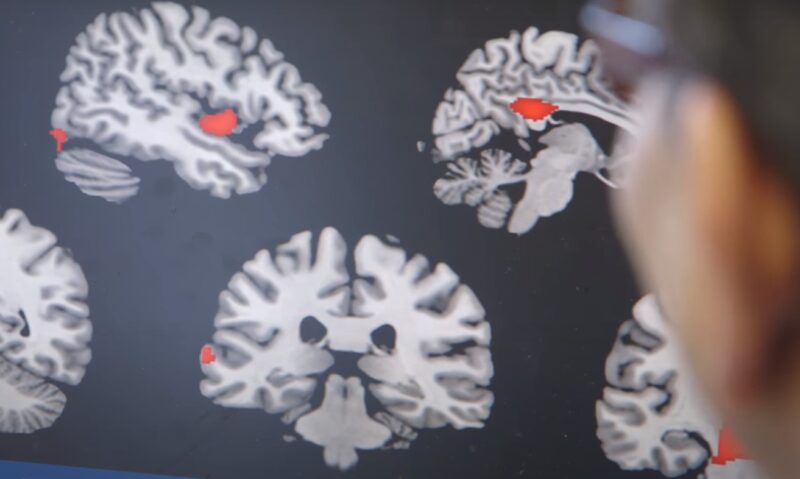Ketamine, traditionally used as an anesthetic, has been gaining traction as a groundbreaking treatment for certain mental health disorders. Its application in therapeutic contexts has shown promise, especially for those who haven’t responded well to conventional treatments.
As with any therapeutic modality, a common question arises: How do you truly gauge its effectiveness? Now, we will go through various indicators that shed light on whether ketamine therapy is working for you, and offer insights into supplementary practices that can enhance its benefits.
Showing the Ropes
Ketamine has been repositioned from its primary use in the medical field to a potential remedy for certain conditions. Let’s first understand the basics.
Origins and Uses
Initially utilized as an anesthetic in surgeries, its potential benefits beyond this realm were eventually explored. Recent studies have indicated its utility in treating conditions such as severe depression. It’s crucial to differentiate between its conventional use and its therapeutic application.
The dosages, methods of administration, and purposes vary, and understanding this distinction is foundational to gauging its efficacy.
Mechanisms of Action
Unlike traditional treatments, this alternative operates differently in the brain. It targets different receptors and pathways. Its potential to rapidly alleviate symptoms, especially in those resistant to conventional treatments, is under rigorous scrutiny.
Understanding its mechanism can help users recognize the changes it induces.
Signs of Effective Treatment

Assessing the effectiveness of any remedy is pivotal. Here, we delve into the tangible and intangible signs indicating that the therapy is working.
Physical Improvements
- Reduced symptoms: The primary aim of any treatment is to alleviate distressing symptoms. A noticeable reduction is a clear indicator.
- Improved sleep patterns: Disrupted sleep is a common symptom in many conditions. A return to regular sleep often signifies positive progress.
Emotional and Cognitive Shifts
- Enhanced mood: An uplifted mood, a decreased frequency of mood swings, or reduced intensity can suggest effective intervention.
- Clarity in thought: Mental fog or indecisiveness is common in conditions like depression. If patients find themselves thinking more clearly, it can be attributed to the treatment.
Ensuring Safe and Effective Use

While understanding effectiveness is essential, ensuring that the treatment is used safely and efficiently is equally vital.
Regular Monitoring
- Medical supervision: Always use under the guidance of a medical professional. Regular check-ins can help in monitoring progress.
- Self-awareness: Being attuned to one’s body and mind can help in recognizing both positive changes and potential side effects.
Maintaining Realistic Expectations
Every individual reacts differently. Some might experience rapid relief, while for others, it might take time. Discussing expectations and any concerns with a healthcare provider can help in setting a realistic treatment trajectory.
After the Initial Response

One of the questions many have is what happens after the initial rounds of therapy. Do the effects last? And if so, for how long? This section seeks to address the aftermath.
Duration of Effects
For some individuals, the beneficial effects might be immediate, while others might need multiple sessions before noticing significant changes. The duration of these effects can vary, ranging from weeks to months. It’s vital to monitor and note these timelines.
Regular follow-ups with a healthcare provider can ensure that the patient receives the right frequency of treatments, optimizing the lasting effects and adjusting as needed.
Combining with Other Therapies
Many find that combining this treatment with other forms of therapy, such as cognitive-behavioral therapy (CBT) or mindfulness practices, can enhance and prolong the effects. It’s important to communicate any additional therapies to the prescribing doctor to ensure that there are no counterproductive interactions or potential side effects.
Potential Side Effects and Solutions

Like all treatments, there are potential side effects. Awareness is key to managing and mitigating these effects.
Common Side Effects
- Nausea or vomiting: Some might experience an upset stomach post-treatment.
- Dissociation or altered perception: Moments of feeling “out of body” can be experienced shortly after the treatment.
It’s essential to inform the medical provider of any side effects. They can offer solutions or adjustments to the treatment.
Managing and Mitigating
- Pre-session preparation: Avoiding heavy meals or consuming certain recommended foods can minimize nausea.
- Post-session care: Having a trusted person accompany the patient post-treatment or ensuring a calm environment can help in managing dissociative effects.
The Importance of Monitoring Progress

Every treatment requires careful tracking and monitoring. By evaluating progress, both the patient and healthcare provider can determine the therapy’s effectiveness and make necessary adjustments.
Maintaining a Personal Journal
Keeping a detailed journal of one’s feelings, emotions, and overall mental state before and after each session can provide invaluable insights. The nuances of each entry can help in understanding the subtle shifts in mood and mental clarity.
A consistent journaling practice also allows for patterns to emerge, revealing the potential long-term impacts and benefits of the therapy.
Feedback from Loved Ones
Often, those close to the patient can observe changes that might not be immediately apparent to the individual undergoing treatment. Regular check-ins with family and friends can give a broader perspective on behavioral changes, improvements in interpersonal interactions, or any other noticeable shifts.
Factors Influencing Effectiveness

While many have reported positive outcomes from the treatment, it’s essential to understand that individual experiences can vary. Several factors might influence the therapy’s effectiveness. Existing health conditions, be it physical or mental, can play a significant role in how one responds.
For example, a person with chronic pain might have a different experience than someone primarily seeking mental health relief. Being transparent about all health conditions with the healthcare provider ensures that the therapy is tailored to the individual’s unique needs.
Setting realistic expectations is crucial. While some might expect immediate relief, others might anticipate a gradual process. Balancing these expectations with the actual experience can influence the perceived effectiveness of the therapy.
Open conversations with therapists and clinicians can help set the right expectations and prepare the patient for the journey ahead.
Continued Research and Updates
The medical community is continuously researching and updating treatment protocols. Staying informed about the latest findings can empower patients to make informed decisions.
The global interest in this therapy has spurred numerous studies, each contributing to a better understanding of its mechanisms and potential applications. Being aware of these findings can provide hope and context to those considering or undergoing the treatment.
Recent research suggests potential applications beyond mood disorders. Some studies are exploring its use in treating chronic pain conditions. Evolving Treatment Protocols As more is learned about its effects and optimal dosages, treatment protocols might evolve.
Regular consultations with healthcare providers ensure that patients are receiving the most current and effective treatment available. Keeping the lines of communication open with the medical community guarantees that the treatment journey is as smooth and beneficial as possible.
Incorporating Supplementary Therapies

While the primary treatment is a significant component, integrating complementary practices can often enhance its effectiveness, allowing individuals to experience more profound and long-lasting benefits.
Mindfulness and Meditation
Mindfulness exercises and meditation can serve as powerful tools to bolster mental well-being. By cultivating a deeper awareness of one’s thoughts and emotions, individuals can potentially amplify the benefits of the primary treatment.
Regular mindfulness practice can help in:
- Recognizing and addressing negative thought patterns.
- Enhancing emotional regulation and resilience.
Physical Activity
Engaging in regular physical activity, such as walking, yoga, or other forms of exercise, can complement the treatment’s positive effects. Physical wellness often translates to improved mental health, creating a synergistic effect.
Physical activities offer benefits like:
- Boosting endorphin levels, the body’s natural painkillers.
- Improving sleep quality and overall energy levels.
Long-term Care and Support

Ongoing support and a structured follow-up plan are crucial to maintain and build upon the initial benefits. Ensuring a robust support system can make a significant difference in the long-term outcomes.
Regular check-ins with the healthcare provider can track progress and make necessary adjustments to the treatment plan. These sessions provide an opportunity for feedback and guidance, ensuring the best possible outcomes.
Regular consultations can assist in:
- Addressing any side effects or concerns promptly.
- Adjusting treatment protocols based on individual responses.
Joining Support Groups
Support groups provide a platform for individuals to share their experiences, challenges, and successes. Being part of such a community can offer emotional support and practical advice, enriching the therapeutic journey.
Support groups offer benefits like:
- Gaining insights from others’ experiences.
- Building a sense of community and understanding.
FAQs
How often should I undergo ketamine therapy to see if it’s working?
The frequency of treatments is individualized. Some patients may benefit from a series of infusions over a couple of weeks, while others might need maintenance sessions spread over months.
Can ketamine therapy lead to dependence?
While ketamine has been abused recreationally and can lead to dependence in that context, the doses and administration methods used in therapeutic settings are different. However, always use ketamine under the supervision of a medical professional to ensure safety.
If I don’t notice any changes after several sessions, does that mean ketamine therapy is not working for me?
It’s possible. Ketamine therapy does not work for everyone. If you don’t notice any benefits after several sessions, discuss this with your healthcare provider to determine the best course of action.
Does a positive initial response guarantee long-term benefits?
Not necessarily. While many people experience rapid relief, ongoing treatments and maintenance sessions might be required to sustain the benefits.
What should I do if I believe the therapy is not working for me?
It’s essential to speak openly with your healthcare provider. They can offer insights, adjust the treatment approach, or suggest alternative therapies.
The Bottom Line
It’s crucial to remember that every individual’s journey is unique. By staying informed, routinely assessing both objective and subjective markers, and maintaining open communication with healthcare providers, one can better understand and optimize the benefits of their therapeutic journey.
It’s paramount to prioritize personal well-being and make informed decisions rooted in both knowledge and introspection.
If your interested in similar topics, be sure to check our website.
